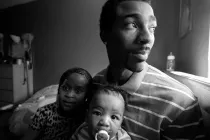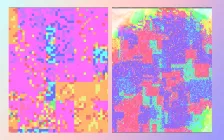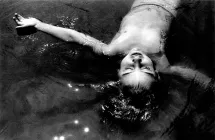What position should a photographer adopt if he invests himself working in a community? Does objectivity really exist? What are the issues with the proximity that a photographer develops in such an environment? Which risks does the work face at its reception by the public? Insider/Outsider: Voyeur or Agent of Change, held at ICP on May 18, was a panel discussion that explored a photographer's right and role in producing in-depth reportage within specific communities. Moderated by David González of the New York Times, this discussion featured photographers who have immersed themselves into issues, cultures, and communities, and documented with sympathy and dignity the stories that brought them there. On stage, image-makers Quito Ziegler, Nona Faustine, and Zun Lee presented their engaged and touching work and, together with González, started a debate that resonated in today’s permeable visual world where the reduction of intimate boundaries also calls for precautions.
Ziegler, who started the panel, is a Brooklyn-based artist and curator interested in social and gender problems. They began their career in the 2000s by working on immigration issues in the US, and co-founded the Minnesota Immigrant Freedom Network, an immigrant rights organization which they co-directed from 2003-2006 while producing large-scale public photography projects on the subject.
“I came to photography by documenting my own life and family,” they said. “But I knew that in order to become a real documentary photographer I had to have a real project. In 2003, I was invited to the Immigrant Workers Freedom Ride and became close to the riders. I was moved by the stories that I heard. Together, we created the organization Minnesota Immigrant Freedom Network and I devoted 3 years of my life to this work. The issues ranged from comprehensive immigration reform to the DREAM Act, working a lot with young people who were undocumented, who were trying to go to college or were being shut out of the educational system. Minnesota is a 92% white state and immigrants are mostly people of color, so that added layers that had to do with racism, isolation, and disempowerment. The work consumed me: I couldn’t actually take pictures without being very touched so I kind of lost the idea of objectivity.”
After completing an MFA at ICP in 2008, Ziegler stopped photographing for a few years and started having more reflections on documentary work while working at the Open Society Institute in the Documentary Photography Project, an institution they had been working with since 2001. These thoughts seemed to be in correlation with the subject of this conference.
“At some point, at the Open Society, we wanted to be more critical and do more,” they explained. “We started to think that we shouldn’t support photographers looking at issues, but not being involved. We thought that was pure voyeurism and that we should support people that are from the community, putting themselves into it and don’t positioning themselves at others.”
Led by their profound devotion to social issues, Ziegler later dedicated some of her time to New York City’s queer and trans communities and organized a wide range of collaborative interdisciplinary projects. Finding themselves in the middle of these communities opened them to a personal change in their life.
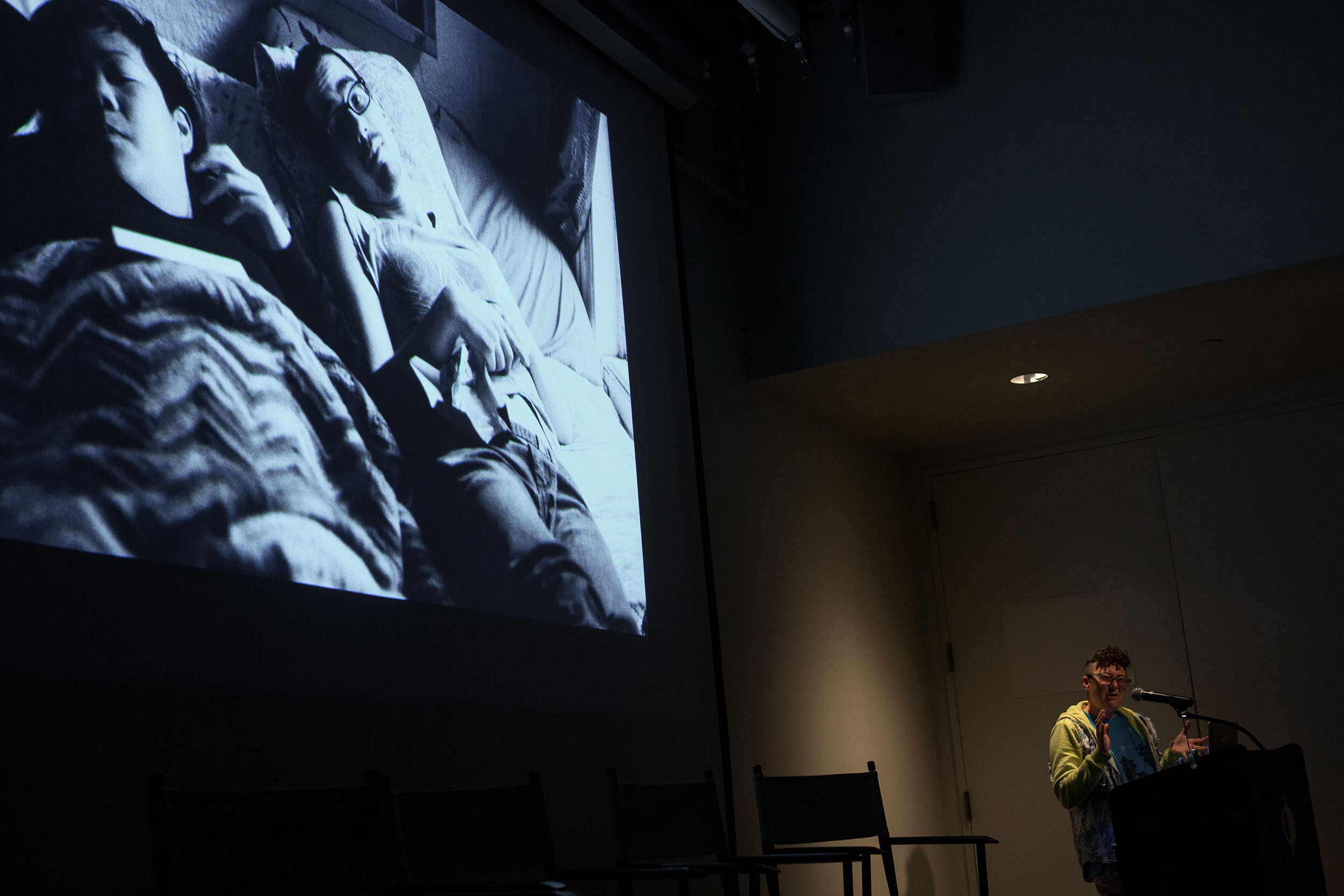
“I took my camera again when I met the queer folks in NYC,” they said. “And I realized how queer I was, eventually came out as trans, and discovered a new world. I picked up a 35mm and shot only my adventures at night. I felt like my subjectivity in it was important to show. I was also aware that the people I was photographing were extraordinary. The portfolios about it that we would get at Open Society were always sex workers living in poverty living in poor nations. It was not something I thought right about this subject.”
In her striking photo series White Shoes, Faustine poses at former slave trading sites around the city from Wall Street to City Hall, which slaves helped build, naked but for white stilettos. The high heels represent the white patriarchy and the images function as memorials—meditative reflections on a history Americans have not come to terms with. Faustine began White Shoes in 2012 as a thesis project at the ICP School, and it evolved into a photo series that, in the midst of the Black Lives Matter movement, couldn’t be more critical. To start her talk, she told the poignant background of her first presented picture, which showed her naked in Wall Street, and revealed her anxiety about the photo shoot. She then went through her other pictures shot at various locations such as: the Atlantic Coast in Brooklyn; the Tweed Courthouse, built on top of the African Burial Ground; and the Dutch Pre-revolutionary Cemetery in Brooklyn, where 3 slaves are buried among the early settlers.
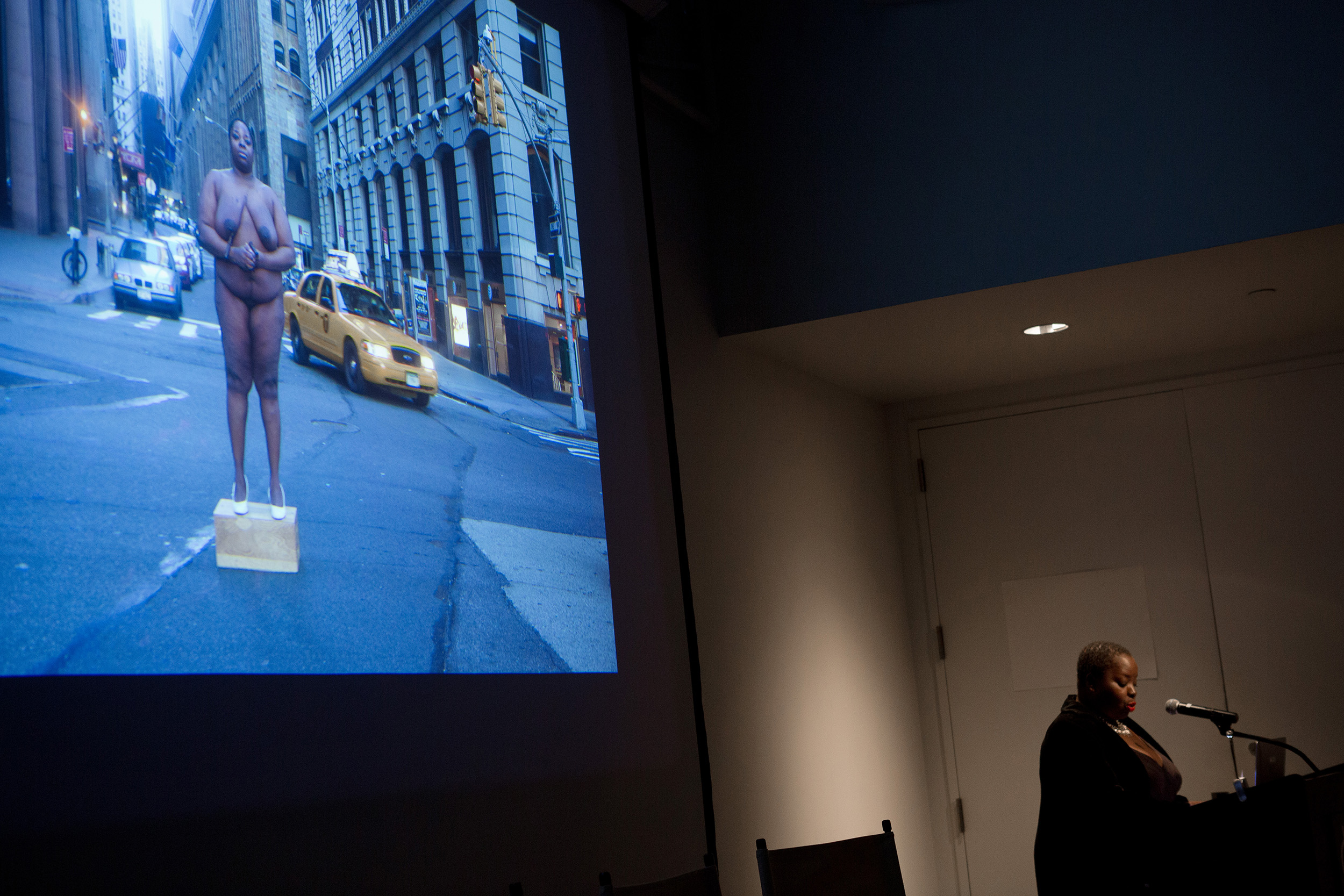
In an article published in Brooklyn Magazine last year, Faustine went through the details of her photographic approach: “Posing naked is an act of solidarity for the women who were put on display during slavery. That is how they were sold: with no clothes. Like pieces of meat. And for me, you have to be willing to risk something. Anyone could get up there with clothes on. It makes the work extremely personal when you take your clothes off. You can’t hide. But no one has ever made any comments. If they ever did, I’d tell them to fuck off. (…) There’s so much reluctance to have conversations about the racism that still exists here, to credit the people who built this country, and to admit that one of the reasons the US is one of the largest economic powers is because of our beginnings as a slave nation. A little credit is definitely deserved. I want a map for visitors that chart these historic sites—a lot of other cities have that; New York doesn’t.”
Lee, the third panelist of the evening, is a photographer also working on stories around the black community, and was a recipient of a Magnum Foundation Fellowship in 2015. His latest and current project is titled Fade Resistance, and Lee describes this project as follows: “Fade Resistance seeks to restore the narrative impact of thousands of found African American vernacular Polaroid photographs, and to fill a representational hole in the history of American snapshot photography. Through the development of an interactive archive and storytelling platform, Fade Resistance will also invite viewers to participate in the collection, organization, and narrative arrangement of African American vernacular imagery. Additionally, this archive will serve as a meeting ground for writers, photographers, historians, and viewers to draw histories, stories, and meaning from generations of self-representation.”
“I hope that this will inspire multidisciplinary collaboration and conversation about ongoing issues of visual representation and agency in African American communities, situating the context of this archive in today’s contemporary landscape,” Lee said before describing some of these found images contained in his vast archive and exploring his thoughts about them.
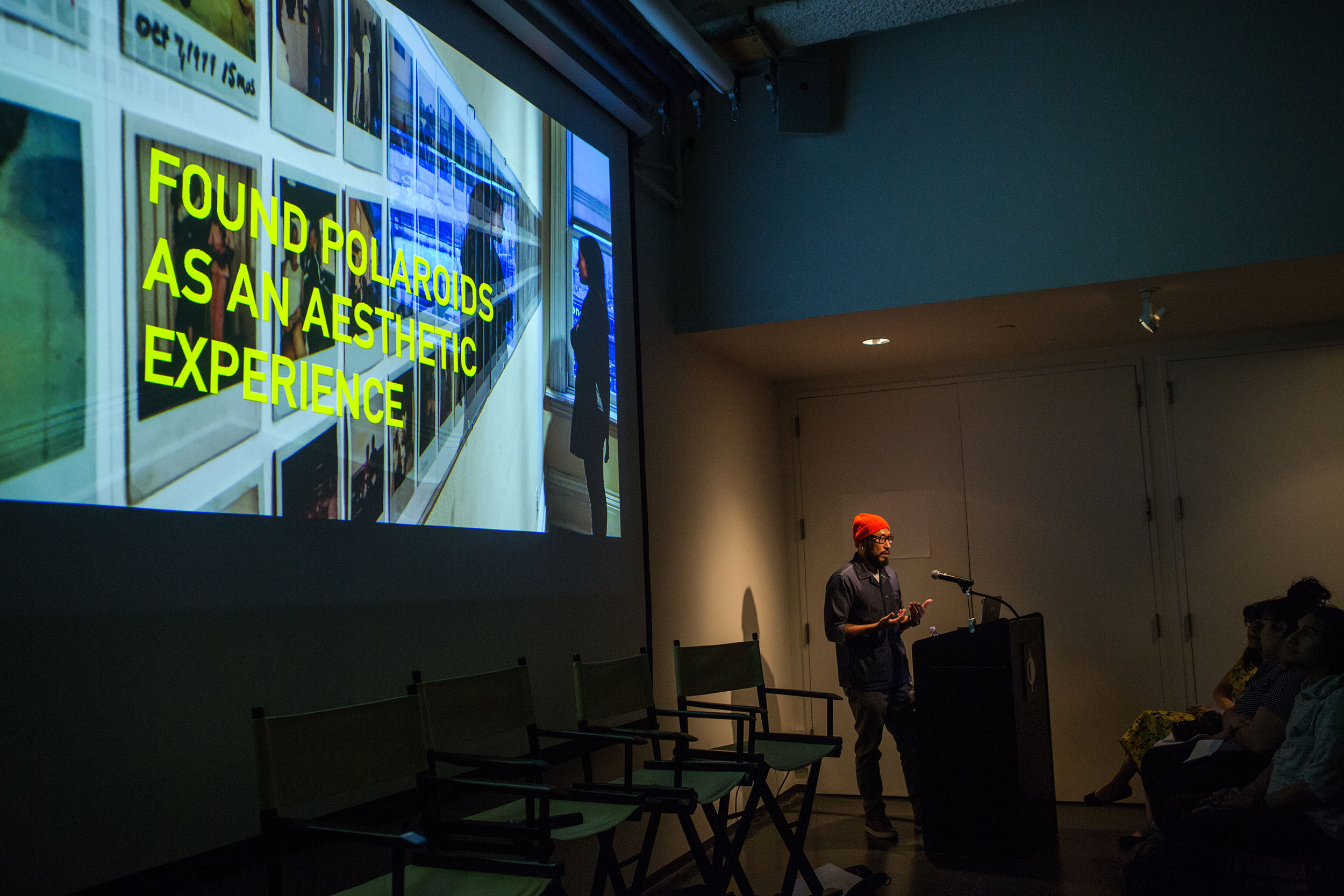
“There’s a pride and joy that comes through these portraits, in terms of the poses, a sense of belonging and who we are as individuals and as part of a family context”, he continued. “There’s a whole prediction about taking Polaroid pictures: shooting it and sharing it with your friends or family, and then making jokes about each other. Much like social media pictures, there’s a sort of process of social and community functioning around it. You always remember the context. That richness of context makes it very powerful. This project made me ask myself important questions. How do we get from this objectness of the Polaroid to it as a vehicle for meaning? When you look at a photograph involving black people in their intimacy, there’s a specific code at work. What makes it okay for us to consume pictures of black families when these families probably never wanted them to become public? This archive is about mattering of black people not only victimized, in suffering or seen through their death, like it is foregrounded in the media, but also in the every day love and joy.”
Finally, González, co-editor of the New York Times’s Lens blog, a writer and photographer himself, showed pictures of his longtime work in the Bronx and reinforced many points brought up by these three photographers. He mentioned in particular the need of having a non-stigmatizing approach in documentary photography projects. He also pointed out the compulsion that guided the work of Lee, Ziegler, and Faustine, and their need to tell their stories in a personal way. This was a bridge to question the drama that sometimes storytellers, media representatives, and photographers look for when they infiltrate communities, and in particular the ones portrayed by the artists at ICP.
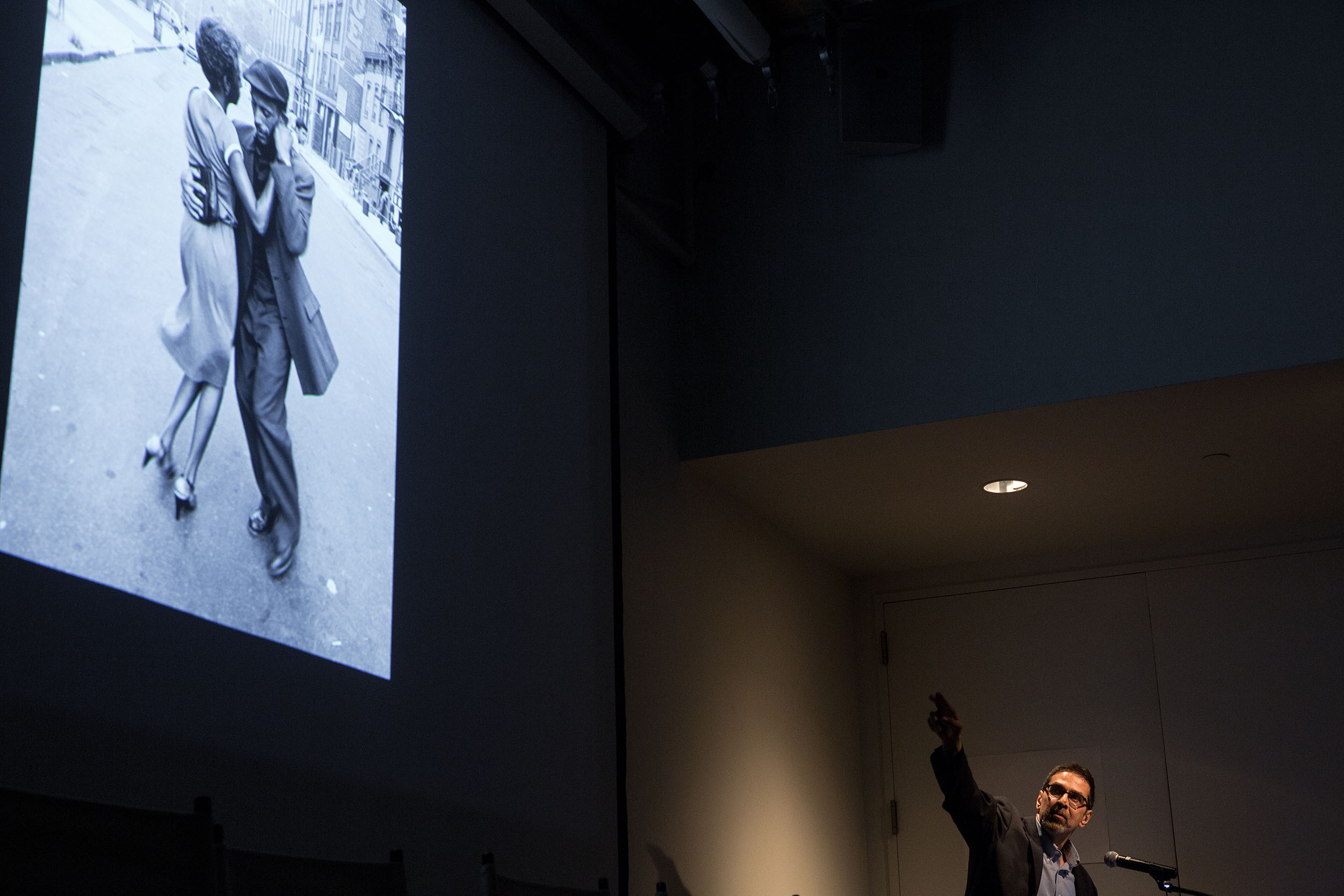
“Mass media always encouraged me to discover other people’s lives,” Ziegler kept up. “But there’s a battle between human curiosity and universalizing someone’s experiences, or just seeing what you want to see about a story. When you’re a photographer, you have to balance how you talk about it or even think about it. People who become professional documentary photographers really commit themselves to the craft of it. But maybe no one can tell a story better than us. So there’s also a battle between self-representation and someone else telling your story.”
“It’s interesting,” replied González. “We’re talking about insider versus outsider. The fact is that we’re always outsiders at some point, somewhere. I did a lot of work on Haiti and got to the point where the more I went there, the less I knew. It’s a thing about a story you’re doing. You could convince yourself after a while that there is actually no story. I did a column last month about needle exchanges. And to illustrate it, I was thinking of a picture that was actually fetishizing a syringe. So I ended up with a portrait of a woman that was trying to get out of drugs. She’s been clean for eight months but if you look at the picture you can’t tell she’s a recovering heroin addict if I don’t tell you. We all have to check our preconceived notions.”
“If I mention my work on black people, I have to say I don’t like to respond to a stereotype by countering it for example,” said Lee. “Because this is acknowledging that the stereotype exists. I prefer to simply tell how black people are. I’m not here to respond to how people see the world. That is not my inclination. I’m not in any system of production.”
While evoking the issues of acuity, objectivity, and stereotype, the debate then directed to the reception of a photograph or a photographic series by the public. Through the discourse of each protagonist, it was easy to realize that the questions largely took the upper hand over the answers. Faustine concluded with an uplifting testimony revealing both the possible complex responses and the threats that any photographic project is subject to. Her testimony also shed light on how to be prepared for any public reception when involved in an engaged matter.
“When I developed my project, I didn’t really show it to pretty much anyone,” recalled Faustine. “Because I didn’t want to be influenced in any direction. When I then put the work out there, the feedback was overwhelmingly positive. But I also realized how much people are in pain, suffering from abuse, poor self-esteem. When they saw me, this naked fat black body…it produced something in them. This woman I would never forget said: ‘How could you do this? How could you devalue yourself?’ She saw herself in me, connected, and made her ashamed of herself. I didn’t respond to people who came to me negatively. It was a positive response, but I also got a lot of severe pushbacks about slavery, hardcore denials, and racist comments. It made me think of about how you should put yourself out publicly, but I was prepared for it.”
Jonas Cuénin is a writer, editor, and photographer based in New York. He is the editor-in-chief of the magazine Camera and a regular contributor to the photography magazines The Eye of Photography and Photograph.



